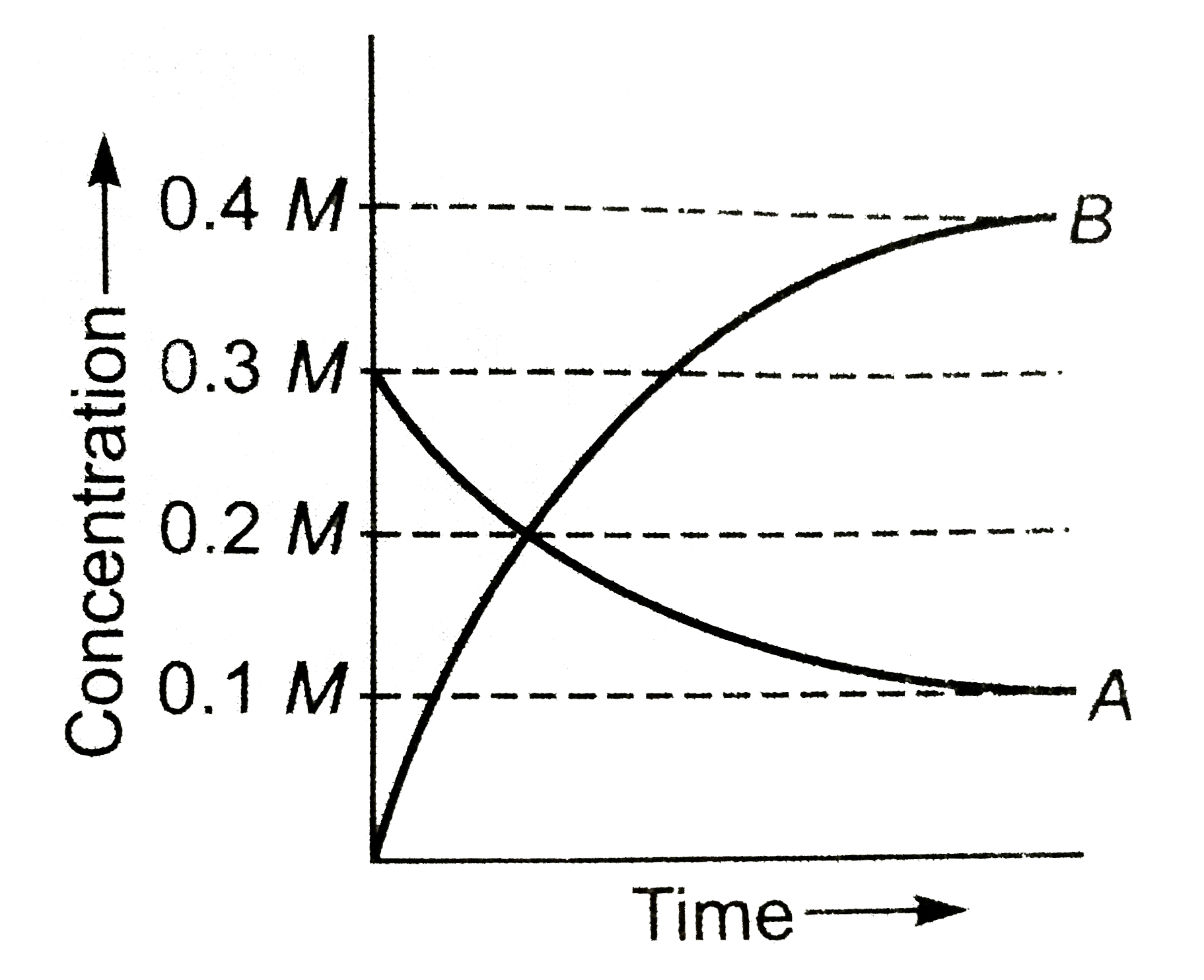The hydrolysis of Adenosine triphosphate [ATP] to give adenosine diphosphate [ADP] is represented by ATP harr ADP. This reaction is exothermic zero[K] . The entropy change for the reaction is 982 J/K at 310 K . The free energy for the reaction is:
31.01 KJ
9.188KJ
−9.188 KJ
31.012KJ
The correct Answer is:D
To find the Gibbs free energy change (ΔG) for the hydrolysis of ATP to ADP, we can use the Gibbs free energy equation:
ΔG=ΔH−TΔS
1. Identify the given values:
- Enthalpy change (ΔH) = 0 J (since the reaction is exothermic at 0 K)
- Entropy change (ΔS) = 982 J/K
- Temperature (T) = 310 K
2. Substitute the values into the Gibbs free energy equation:
ΔG=0−(310K)×(982J/K)
3. Calculate the product of T and ΔS:
TΔS=310×982=304420J
4. Substitute this value back into the equation for ΔG:
ΔG=0−304420J=−304420J
5. Convert ΔG from joules to kilojoules:
ΔG=−304.42kJ
6. Round to appropriate significant figures:
ΔG≈−31.02kJ
Final Answer:
ΔG≈−31.02kJ
- Enthalpy change (ΔH) = 0 J (since the reaction is exothermic at 0 K)
- Entropy change (ΔS) = 982 J/K
- Temperature (T) = 310 K
ΔG=0−(310K)×(982J/K)
TΔS=310×982=304420J
ΔG=0−304420J=−304420J
ΔG=−304.42kJ
ΔG≈−31.02kJ
ΔG≈−31.02kJ
Topper's Solved these Questions
- THERMODYNAMICSBOOK - RESONANCE ENGLISHCHAPTER - THERMODYNAMICSEXERCISE - exercise-2 Part:(II): Single and Double value integer type
11 Videos
- THERMODYNAMICSBOOK - RESONANCE ENGLISHCHAPTER - THERMODYNAMICSEXERCISE - exercise-2 Part:(III): One or more than one options correct
8 Videos
- THERMODYNAMICSBOOK - RESONANCE ENGLISHCHAPTER - THERMODYNAMICSEXERCISE - exercise-3 Part:(III) : Match the column
3 Videos
- TEST SERIESBOOK - RESONANCE ENGLISHCHAPTER - TEST SERIESEXERCISE - CHEMISTRY
50 Videos
Similar Questions
The Gibbs free energy change of a reaction at 27∘C is -26 Kcal. and its entropy change is -60 Cals/K. ΔH for the reaction is :-
View SolutionGibbs-Helmoholtz equation relates the free energy change to the enthalpy and entropy changes of the process as
(ΔG)PT=ΔH−TΔS
The magnitude of ΔH does not change much with the change in temperature but the enrgy factor TΔS changes appreciably. Thus, spontaneity of a process depends very much on temperature.
The enthalpy change for a certain reaction at 300K is −15.0kcalmol−1. The entropy change under these conditions is −7.2calK−mol−1. The free enegry change for the reaction and its spontaneous//nonspontaneous character will be
View Solution
Knowledge Check
What will be the melting point of KCl if enthalpy change for the reaction is 7.25 J mol−1 and entropy change is 0.007 J K−1mol−1?
A1835.2 KB173 KC1035.7 KD1285.2 KA reaction is at equilibrium at 100∘C and the enthalpy change for the reaction is 42.6 kJ mol−1. What will be the value of ΔS in J K−1mol−1?
A120B426.2C373.1D114.2
Cells use the hydrolysis of adenosine triphosphate, abbreviated as ATP, as a source of energy. Symbolically, this reaction can be written as where ADP represents adenosine diphosphate. For this reaction, δG∘ is 30 kJ/mol and δH0 is -30 kJ/mol at 27∘C. Calculate the entropy change.
View SolutionZinc reacts with dilute hydrochloric acid to give hydrogen at 17∘C. The enthalpy of the reaction is −12.00kJmol−1 of zinc and entropy change equals 50JK−1mol−1 for the reaction. Calculate the free enegry change and predict whether the reaction is spontaneous or not.
View SolutionWhen enthalpy and entropy change for a chemical reaction are −2.5×103 cals and 7.4 cals K−1 respectively. Predict that reaction at 298 K is
View SolutionThe standard enthalpy or the decomposition of N2O5to NO2 is 58.04 kJ and standard entropy of this reaction is 176.7 J/K. The standard free energy change for this reaction at 25∘C is_____________.
View SolutionThe enthalpy change for a given reaction at 298K is −xcalmol−1. If the reaction occurs spontaneously at 298K, the entropy change at that temperature
View SolutionThe figure shows the change in concentration of species A and B as a function of time.
The equilibrium constant Kcfor the reactionA(g)⇔2B(g) is :

View Solution